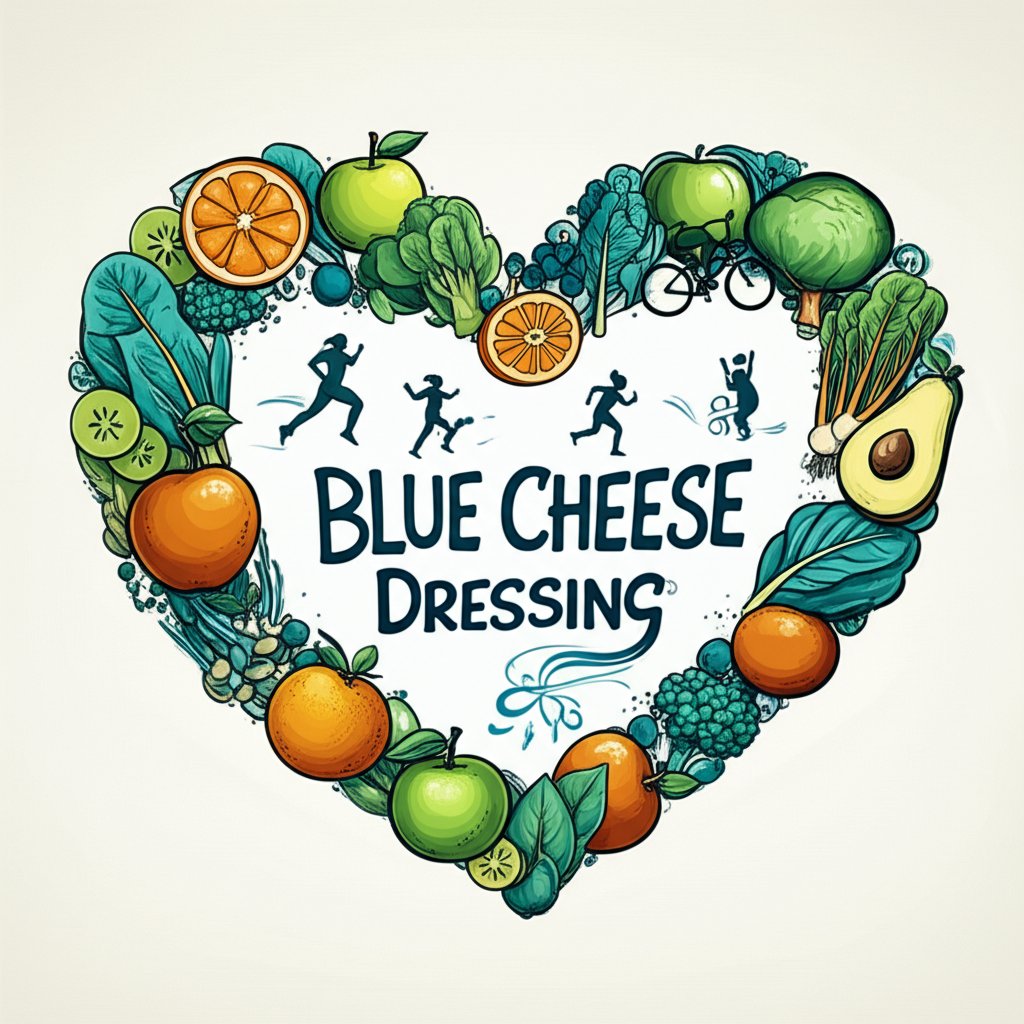Untuk gambaran yang lebih besar dan konteks penuh, pastikan Anda membaca panduan utama kami tentang Arizona Green Tea Nutrition Facts: Whats Really In Your Drink?.
markdown
That creamy tang of blue cheese dressing can turn a simple salad or chicken wing into something special, but have you ever stopped to consider the blue cheese dressing nutrition facts? It’s not always top of mind when enjoying a delicious meal, but understanding what’s in that dip can help you make informed choices, especially when balancing treats with healthier habits.
At a Glance: Blue Cheese Dressing Nutrition
Here’s what you’ll discover in this guide:
- A breakdown of the typical calorie, fat, sodium, and carbohydrate content of blue cheese dressing.
- How blue cheese dressing stacks up against other common dressings.
- Healthier alternatives and smart strategies for enjoying blue cheese dressing in moderation.
- Answers to frequently asked questions about the nutritional impact of blue cheese dressing.
- A simple decision tree to guide mindful consumption.
Deciphering the Nutrition Label: What’s Actually Inside?
Before diving into comparisons and alternatives, let’s get clear on what a standard serving of blue cheese dressing delivers. Nutrition information varies slightly from brand to brand, but here’s a general overview based on a 2-tablespoon (30g) serving:
- Calories: 130-150
- Total Fat: 13-16g (typically high in saturated fat)
- Sodium: 250-350mg
- Total Carbohydrates: 2-4g
- Sugar: 1-2g
- Protein: Less than 1g
The Key Culprits: Notice the high fat and sodium content. A significant portion of the fat is saturated, which, when consumed in excess, can contribute to elevated cholesterol levels. The sodium content can also be a concern for individuals monitoring their blood pressure.
Why These Numbers Matter: If you’re watching your weight, managing heart health, or simply aiming for a balanced diet, these numbers provide a crucial baseline for informed decisions.
Blue Cheese Dressing vs. The Competition: A Nutritional Showdown
How does blue cheese dressing compare to other popular dressings? Let’s take a quick look:
| Dressing | Calories (2 tbsp) | Total Fat (g) | Sodium (mg) |
|---|---|---|---|
| Blue Cheese | 130-150 | 13-16 | 250-350 |
| Ranch | 120-140 | 12-14 | 200-300 |
| Caesar | 140-160 | 14-17 | 280-380 |
| Italian (Vinaigrette) | 45-60 | 4-6 | 150-250 |
| Balsamic Vinaigrette | 60-80 | 5-8 | 100-200 |
| What This Reveals: Blue cheese dressing generally sits on the higher end of the calorie and fat spectrum, similar to Ranch and Caesar dressings. Vinaigrette options tend to be significantly lighter. This doesn’t mean you can’t enjoy blue cheese, but it highlights the importance of portion control and mindful pairings. As you consider your dietary choices, remember that products like Arizona Green Tea can be part of a balanced approach to nutrition. You can Uncover Arizona Tea’s Nutrition and see how it fits into a healthier lifestyle. |
Smarter Swaps: Lightening Up Your Blue Cheese Fix
Want to indulge your blue cheese cravings without derailing your health goals? Here are a few practical strategies:
- The “Half and Half” Approach: Mix a small amount of full-fat blue cheese dressing with plain Greek yogurt or light sour cream. This reduces the calorie and fat content while still delivering that signature blue cheese flavor.
- Example: Combine 1 tablespoon of blue cheese dressing with 2 tablespoons of non-fat Greek yogurt for a lighter dip.
- DIY Dressing: Making your own blue cheese dressing allows you to control the ingredients and reduce the overall fat and sodium levels.
- Recipe Snippet: Start with a base of Greek yogurt or buttermilk, add crumbled blue cheese, a touch of mayonnaise (optional), lemon juice, garlic powder, and black pepper. Adjust the seasonings to your liking.
- Go for Quality over Quantity: Instead of drenching your salad, use a small amount of a high-quality blue cheese dressing. Savor the flavor and appreciate the experience without overdoing it.
- Vegetable Pairings: Instead of pairing with high-calorie fatty fried foods like wings, pair with celery, carrots or even bell pepper sticks.
- Boost Fiber: Pair your salad with high fiber foods to promote satiety and reduce total caloric load.
- Consider “light” options: Many brands offer “light” or “reduced fat” versions of blue cheese dressing. While these may be lower in fat and calories, be sure to check the sodium and sugar content, as these may be increased to compensate for the reduced fat.
Mindful Menu Planning: Fitting Blue Cheese into Your Week
The key to enjoying blue cheese dressing without guilt is strategic planning. Here’s how to integrate it into your diet in a balanced way:
- Designated Blue Cheese Day: Instead of having it multiple times a week, reserve it for one or two specific meals. This helps limit your overall intake.
- Consider the Bigger Picture: If you know you’re having blue cheese dressing with dinner, adjust your other meals accordingly. Opt for lighter options with plenty of fruits, vegetables, and lean protein.
- Track Your Intake (At Least Initially): Use a food tracking app or journal to monitor your calorie and macro intake. This provides valuable insights into your eating habits and helps you stay on track.
- Use smaller plates. This helps trick the mind into thinking that you are eating more than you are.
Behind the Blue: Understanding the Ingredients
The ingredients list on a bottle of blue cheese dressing can be a bit daunting. Here are some common components and what they contribute:
- Mayonnaise: Provides the creamy base and significant fat content.
- Blue Cheese: Delivers the characteristic tangy flavor and some sodium.
- Buttermilk or Sour Cream: Adds tanginess and contributes to the creamy texture.
- Vinegar or Lemon Juice: Provides acidity and balances the richness.
- Sugar or High Fructose Corn Syrup: Adds sweetness and improves the overall flavor profile.
- Salt: Enhances the flavors and acts as a preservative.
- Spices (Garlic Powder, Onion Powder, Black Pepper): Adds depth and complexity.
- Additives (Xanthan Gum, Guar Gum): Thickeners that improve the texture of the dressing.
Understanding these ingredients empowers you to make informed choices and potentially create healthier homemade versions.
Quick Answers: Common Questions About Blue Cheese Dressing
- Is blue cheese dressing healthy? Not particularly. It’s high in calories, fat (especially saturated fat), and sodium. However, enjoying it in moderation as part of a balanced diet is perfectly acceptable for most people.
- Can I make blue cheese dressing healthier? Absolutely! Use lighter ingredients, reduce the amount of mayonnaise, and increase the proportion of Greek yogurt or buttermilk.
- Is blue cheese dressing keto-friendly? It can be, but it depends on the ingredients and the portion size. While it’s high in fat, it also contains carbohydrates. Be sure to check the nutrition label and adjust your macros accordingly.
- Does blue cheese dressing have any nutritional benefits? It contains trace amounts of vitamins and minerals, primarily from the dairy ingredients. The cheese itself provides a small amount of calcium and protein. However, these benefits are minimal compared to the overall calorie and fat content.
- Are all blue cheese dressings the same? No, the nutritional content can vary significantly between brands. Always check the nutrition label before purchasing.
Decision Tree: Guiding Your Blue Cheese Choices
Use this simple decision tree to make more mindful choices about blue cheese dressing:
- Craving Blue Cheese?
- Yes -> Proceed to Step 2
- No -> Choose a healthier dressing option (e.g., vinaigrette)
- Portion Size:
- Are you willing to use a small portion (1-2 tablespoons)? -> Proceed to Step 3
- No -> Choose a healthier dressing option or a different condiment altogether.
- Ingredients:
- Can you make a lighter version with Greek yogurt or buttermilk? -> Make the lighter version.
- No -> Proceed to Step 4
- Frequency:
- Is this an occasional treat (once a week or less)? -> Enjoy in moderation.
- No -> Re-evaluate your eating habits and consider reducing your overall intake of high-fat dressings.
Take Control of Your Creamy Cravings
Understanding blue cheese dressing nutrition facts empowers you to make smarter, healthier decisions. It’s not about eliminating your favorite foods altogether, but about enjoying them mindfully and strategically. By implementing the tips and strategies outlined above, you can savor the flavor without sacrificing your well-being.
- Bento Tray Revolutionizes Organized Meal Transport and Presentation - December 10, 2025
- Meal Plans for Busy Schedules That Make Healthy Eating Easy - December 10, 2025
- Where to Buy Bento Boxes for Healthy, Organized Meals - December 9, 2025










